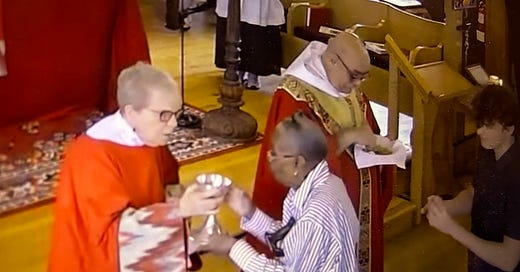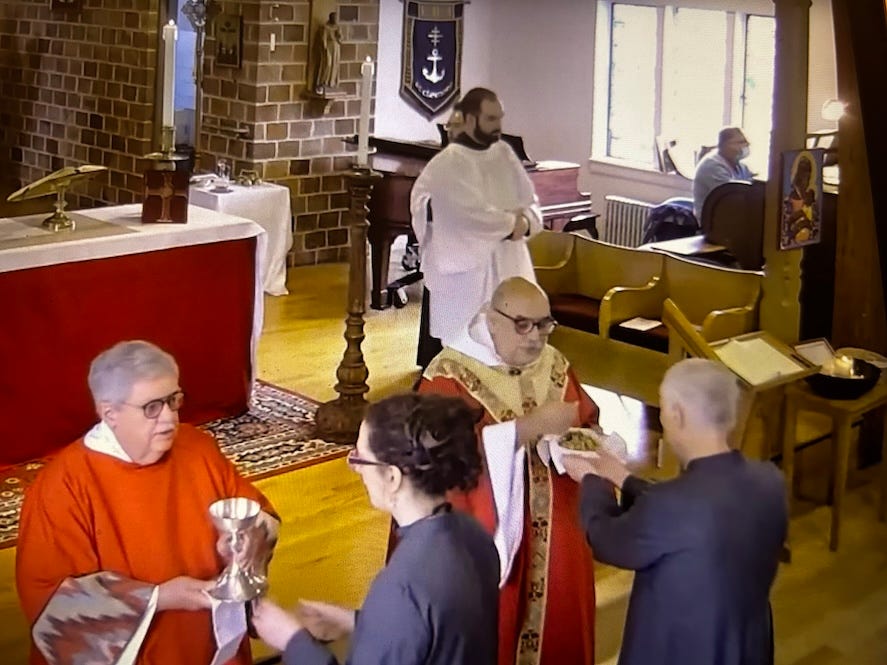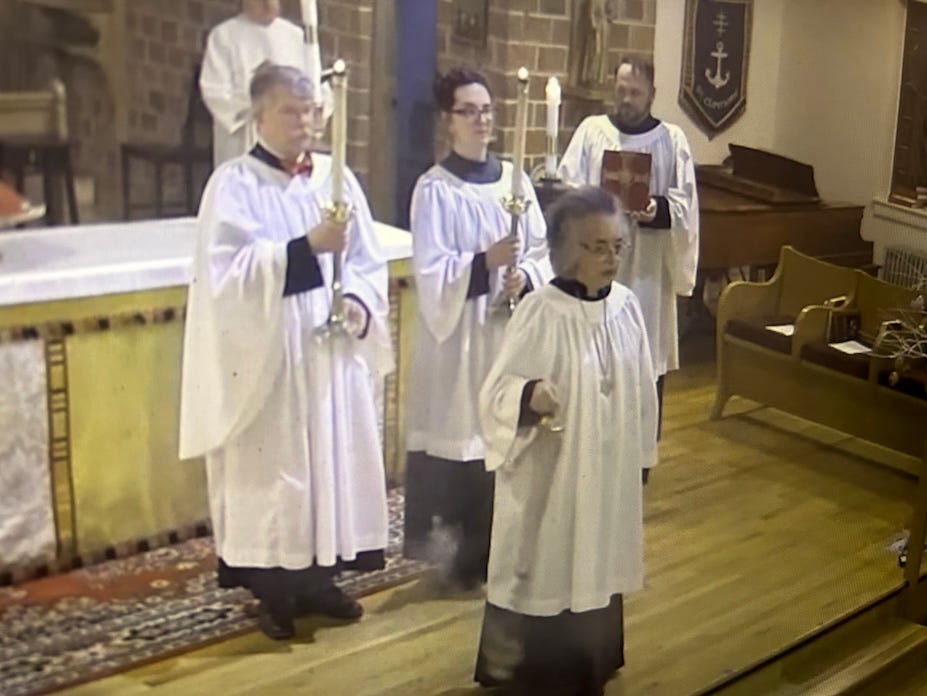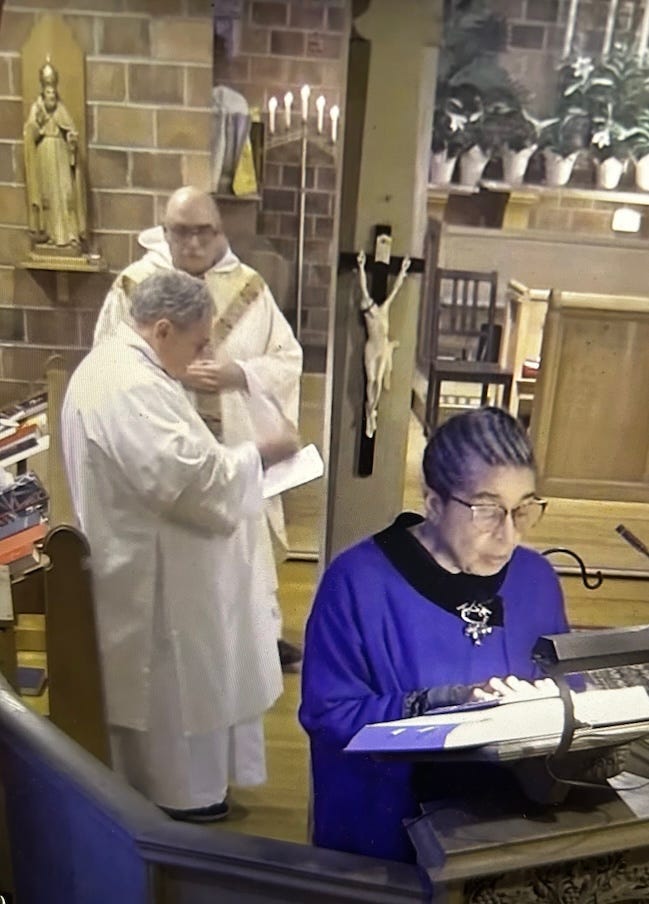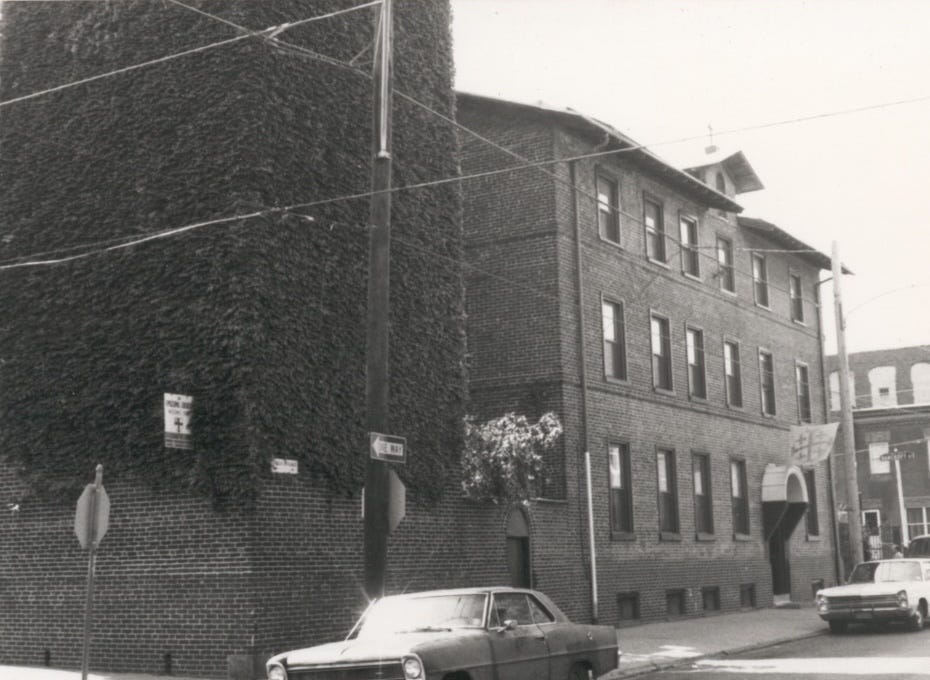Is St. Clements, Seattle poised for growth? Part Two
Take my hands, and let them move - At the impulse of Thy love
Please read Part One before reading this.
What do I mean by poised for growth?
I think the parish is poised for growth. It’s an impression. It’s partly feeling, partly intuition, and grounded in several shifts in the parish’s life. I’ll mention seven.
1. The percentage of parishioners involved in oversight has significantly increased. Many more people are routinely accepting responsibility for the direction and work of the three threads of oversight: spirituality, community, and leadership. The most obvious change can be seen in the four parish community meetings each year in which most active members gather to reflect upon and offer a collective parish voice. That has now included an assumption that the vestry will meet on its own another four times and in its work take into account the thinking of the broader congregation. At the moment there’s a St Clement's Strategy Overview team. That group is to pull together a somewhat integrated plan that is rooted in the work of the community meetings and last year’s vestry. Their work will be brought back to a community meeting for comment and then onto the rector and vestry for action. There’s also a Parish Development Team with the responsibility to keep the development process moving forward.
2. We are increasingly clear about who we are, our identity and culture. That makes it easier to communicate to others. That included being “An Anglo Catholic Parish with an African American Heritage.”
3. There seem to be more visitors and new comers than in the recent past. That may result in a slow increase in average attendance.
4. We made a clear decision that we wanted to grow and to remain a small parish. We said, God willing, we wanted to get off the plateau. We became more concrete about what we meant by “we want to remain a small parish.” For just about everyone the size we desired was an increase in Sunday attendance from the mid 40s to someplace between 56 and 100. We heard the collective voice of the congregation saying it was open to growth.
5. We came back from the pandemic somewhat stronger. Doing mass on Zoom at first seemed odd. But it allowed for everyone to hear everyone else. That was very different than being around a small table with three others. I believe that bonds of affection were build and strengthened. Many churches reported a lower average attendance after the pandemic. We held our own and did so in good spirits.
6. The parish community has successfully faced into several difficult or complex situations. That kind of corporate effectiveness suggests an increased level of trust and confidence. My primary example is the prayerful, compassionate and firm way that leaders and members dealt with the need to ask two people to leave the parish. It was very painful and sad. And at the same time it was dealt with thoughtfully with courage and persistence.
7. The parish’s financial position is much improved. A number of people increased their pledges and money has been left to the parish in member’s wills. There has been a very thoughtful and disciplined process to consider how to best use these funds to address current needs and ensure the church’s future.
So, we’ll see how things unfold over the next few years.
Changing the equilibrium by reducing the strength of restraining forces
Enable with perpetual light,
The dullness of our blinded sight
A short bit of theological wisdom. Our movement is “at the impulse of Thy love.” In some of the writing Sister Michelle and I have done we refer to as the nudging of the Holy Spirit.
"Veni, Creator Spiritus" is sung at ordinations and was sung at the Coronation of HM King Charles III. Even kings are dependent on the impulse of the Holy Spirit. If you’re in a reflective mode you might listen to that now before we move into all the behavioral science material
Changing the equilibrium
Kurt Lewin had a three phase change theory.
1) Unfreeze
2) Change the level
3) Refreeze
Unfreezing assumes that systems often maintain a somewhat stable equilibrium. This is the result of many forces acting upon the current equilibrium, some driving toward a new state and others restraining. You see change when the forces on one side or the other of the current equilibrium change. Increase the driving forces and/or decrease the restraining forces and you see change.
Along with that there was the learned experience that the most effective interventions were ones that removed or decreased the strength of the restraining forces. When we try to increase the driving forces that is usually met with a new counter force that then maintains the existing equilibrium. Change doesn't come easily. Reducing the power of restraining forces is difficult because of existing behavioral norms and the inclination of people to defend the existing arrangement of influence.
When the unfreezing begins we lose touch with the present
Sean Rowe, the soon to be Presiding Bishop recently quoted Thomas Merton.
In a time of drastic change one can be too preoccupied with what is ending or too obsessed with what seems to be beginning. In either case one loses touch with the present and with its obscure but dynamic possibilities. What really matters is openness, readiness, attention, courage to face risk. You do not need to know precisely what is happening, or exactly where it is all going. What you need is to recognize the possibilities and challenges offered by the present moment, and to embrace them with courage, faith, and hope. In such an event, courage is the authentic form taken by love.
Our ability to navigate the change depends upon our existing emotional and spiritual maturity. We can choose to access those qualities and refuse to get lost in our anxiety about what we will lose or what might be in the future.
Force Field Analysis
Lewin’s Force Field Analysis (FFA) provided a method to identify and consider the forces active in a system. You begin by deciding on an area of concern in which you desire a change in the current state of things, e.g., the level of trust, transparency, the flow and beauty of liturgy, membership growth.
It could be diagramed like this.
You would describe:
1. Now – the current state of things. We have an Average Sunday Attendance (ASA) of 43 and are on a plateau.
2. Target/Goal/Desired State. We hope for an ASA of 60 – 100.
3. Name the forces. What are the active forces driving the parish toward its goal? What are the restraining forces?
Then you would analyze and strategize, reflect and plan.
1. The strength of the forces. What are the strongest driving and restraining forces? Groups might prioritize the forces.
2. The forces most easily changed. The group identifies those they believe would be easiest to influence to remove, reduce, strengthen.
3. Consider what to do. Do we focus on increasing the strength of a couple of forces or add a new driving force or find ways to reduce the strength of a restraining force?
More on Force Field Analysis
Force Field Analysis background How to do a FFA
Watch this video on Force Field Analysis Worksheet for doing Force Field Analysis
Reducing restraining forces
The theory suggest that the most effective way to move to a new level is to reduce the strength of the restraining forces. I’ll explore that by looking at my first parish as a young priest. I’m not going to do a FFA on St. Clement’s. That is something that can best be done by a group within the parish, maybe the Strategy Overview team or the Parish Development Team. Some group with strong strategic thinking skills would be best.
Closed?
One of the restraining forces at St. Elisabeth’s was that people in the neighborhood thought we were closed. They knew some people lived there but thought it a rather odd group. The former vicar and his friends were not very interested in the neighborhood.
The parish had not had a strong sanctifying presence[i] in the community for a number of years. Our task was to develop that presence through symbols, relationships, service and worship. In practice the four overlapped. Here’s what we did.
Symbols: The electric bell system in the church tower had been down for years, we restored it, and the Angelus was again heard before Morning and Evening Prayer and at noon. A flag of the Jerusalem Cross was hung over the entry of the rectory (picture below). We had a new church sign. The doors were open for Morning and Evening Prayer and a couple of mid-week masses.
Relationships: I made it a point to shop in the neighborhood stores a small grocery, a deli on the corner, an Italian/German bakery, a small breakfast – lunch shop. We picked up on a practice common in many English parishes and placed a large notice board near the entrance to the church. People could post community activities. Because of the routine around the Daily Office it was easy for people to stop by for a minute to speak with the vicar. We distributed brochures on the parish and the summer day camp a few times.
Service: The parish began to have a summer day camp. In parallel with the camp we developed the Ministry in the City program for college students to serve as staff in the camp, live with a parish family, and participate in a community of worship, service and learning. That helped develop relationships with other parishes in the diocese. We had a small food bank. The parish offered life skills education through SEEK (St. Elisabeth’s Educational Center).
Worship: The parish moved from a pattern of one Sunday and one Wednesday mass to Sunday at 10:30 and 7:00 pm, Wednesday and Thursday masses. We had Morning and Evening Prayer daily. It became clear that the worship of God was the center of our life.
Part Three — “Is St. Clements, Seattle poised for growth? Part Three” will include a look at identity and culture, the work of communicating that and the development of a dense culture. That may suggest driving and restraining forces we need to explore.
This abides,
Bother Robert
Is St. Clement's, Seattle poised for growth?
Part One, Part Two, Part Three, Part Four
[i] Sanctifying presence “The primary sanctifying relationship of any parish is through the presence of the baptized members scattered into the arenas of daily life—family and friends, workplace, and civic life … The second most common sanctifying relationship is by the parish as a body with the community of people living in the area of the parish—a city neighborhood, a small town, a sprawling suburban community. There are other relationships with external communities for many parishes. Some churches are “destination parishes” that attract people from all over the region because of their liturgy, preaching, witness, or history. Others have a connection with a vocational community such as the performing arts, the medical practitioners, or the volunteer fire department.”
( An Energy Not its Own: Three Cycles of Parish Life and the Purposes of the Parish Church, Chapter One)

